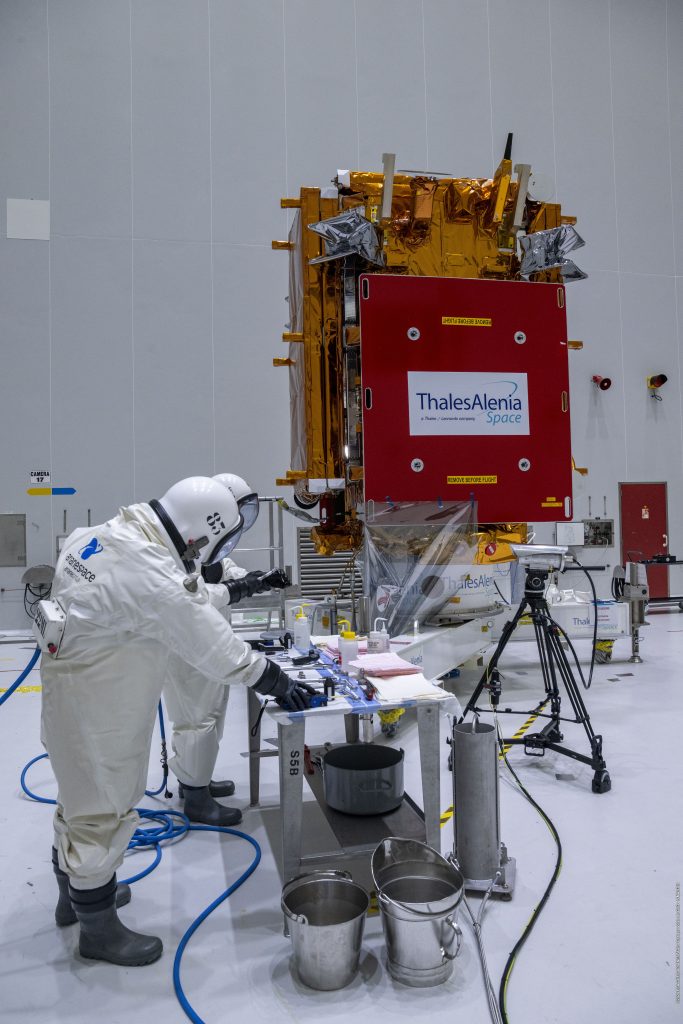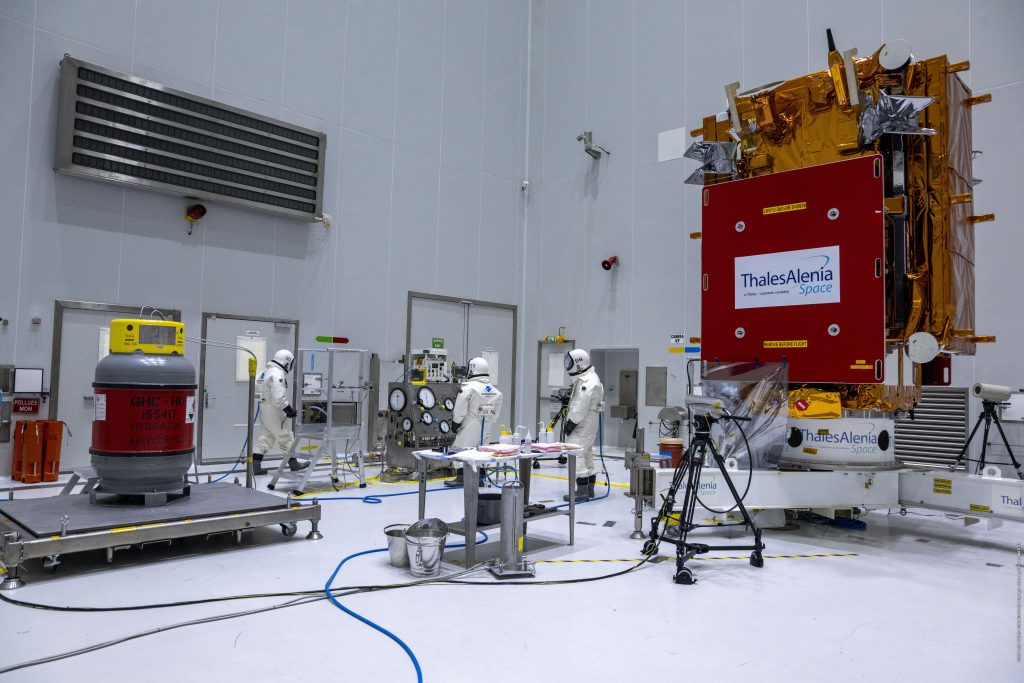Marking a major milestone in the preparation of Copernicus Sentinel-1C for its scheduled 3 December liftoff, experts have completed the critical and hazardous process of fuelling the satellite.

Preparing for fuelling Sentinel-1C (Credits: ESA-CNES-ARIANESPACE/Optique vidéo du CSG–S. Martin)
Once in orbit, Sentinel-1C will extend the Sentinel-1 mission’s legacy, delivering radar imagery to monitor Earth’s changing environment to support a diverse range of applications and scientific research. Additionally, Sentinel-1C brings new capabilities for detecting and monitoring maritime traffic.
The satellite has been at Europe’s Spaceport in Kourou, French Guiana, since early October, being tested and readied for its big day – the all-important launch on a Vega-C rocket. Notably, this launch marks Vega-C’s return to flight, a key step in restoring Europe’s independent access to space.
With over a month of preparations completed at the spaceport, the recent ‘flight readiness review’ along with the fact that the Vega-C rocket is being prepared, signalled authorisation to fuel the Sentinel-1C satellite.

Fuelling Sentinel-1C (Credits: ESA-CNES-ARIANESPACE/Optique vidéo du CSG–S. Martin)
The European Space Agency’s Project Manager for the Sentinel-1 mission, Ramón Torres, said, “The launch campaign here in Kourou has gone very well and our thanks go to all the teams that have been involved.
“The first part of the campaign to launch Sentinel-1C complete and we are entering today the ‘combined operations’ part, which is carried out together with the Arianespace and Avio teams.

Close eye on the gauges when fuelling Sentinel-1C (Credits: ESA-CNES-ARIANESPACE/Optique vidéo du CSG–S. Martin)
“With the satellite fully loaded with 154 kg of fuel, the next step will be to mate it with the launcher adapter and encapsulate them within the Vega-C rocket fairing in preparation for launch on 3 December.”
From the Sentinel-1C launch campaign team in Kourou.
Learn more about Copernicus Sentinel-1.

Discussion: no comments